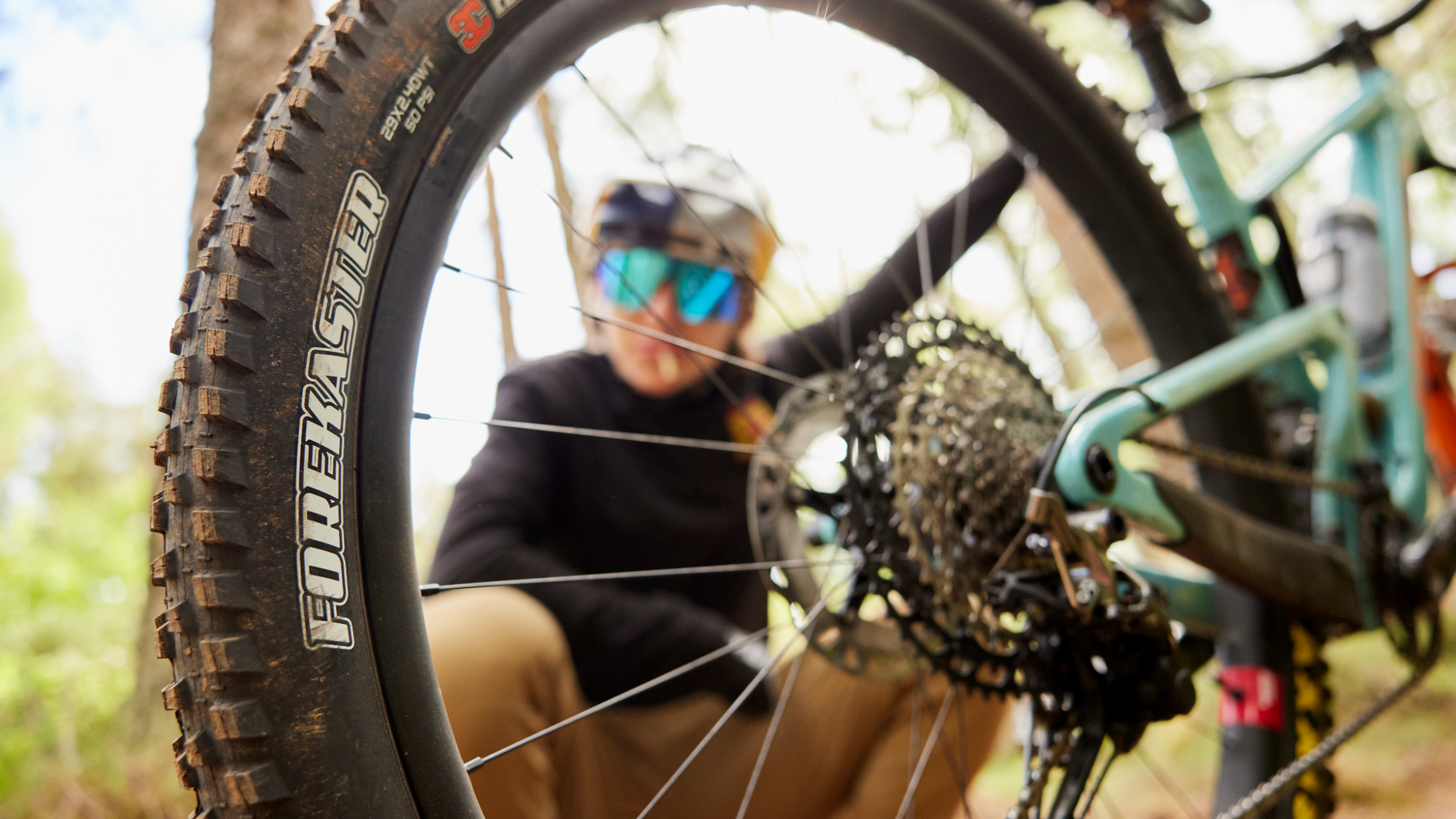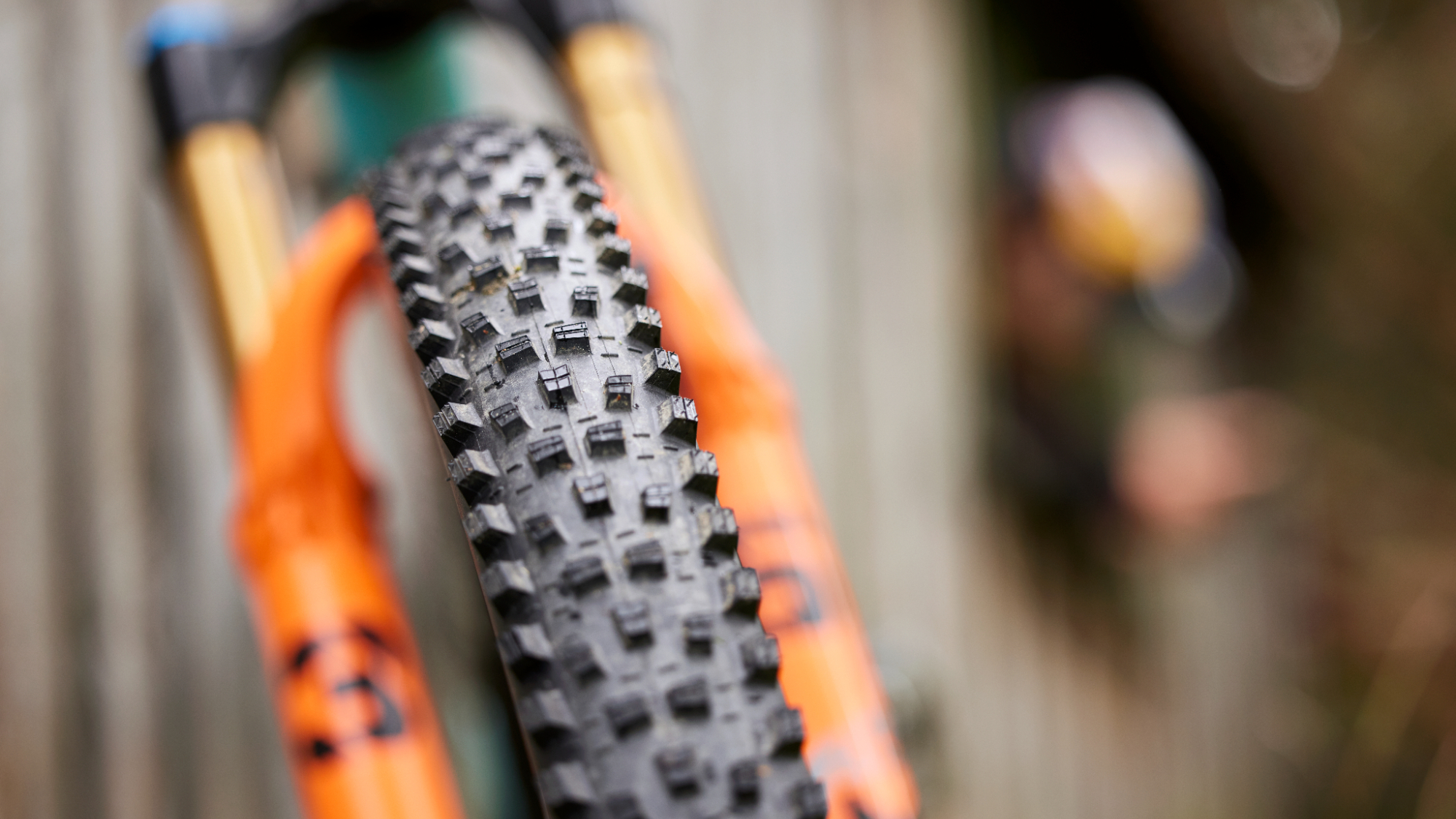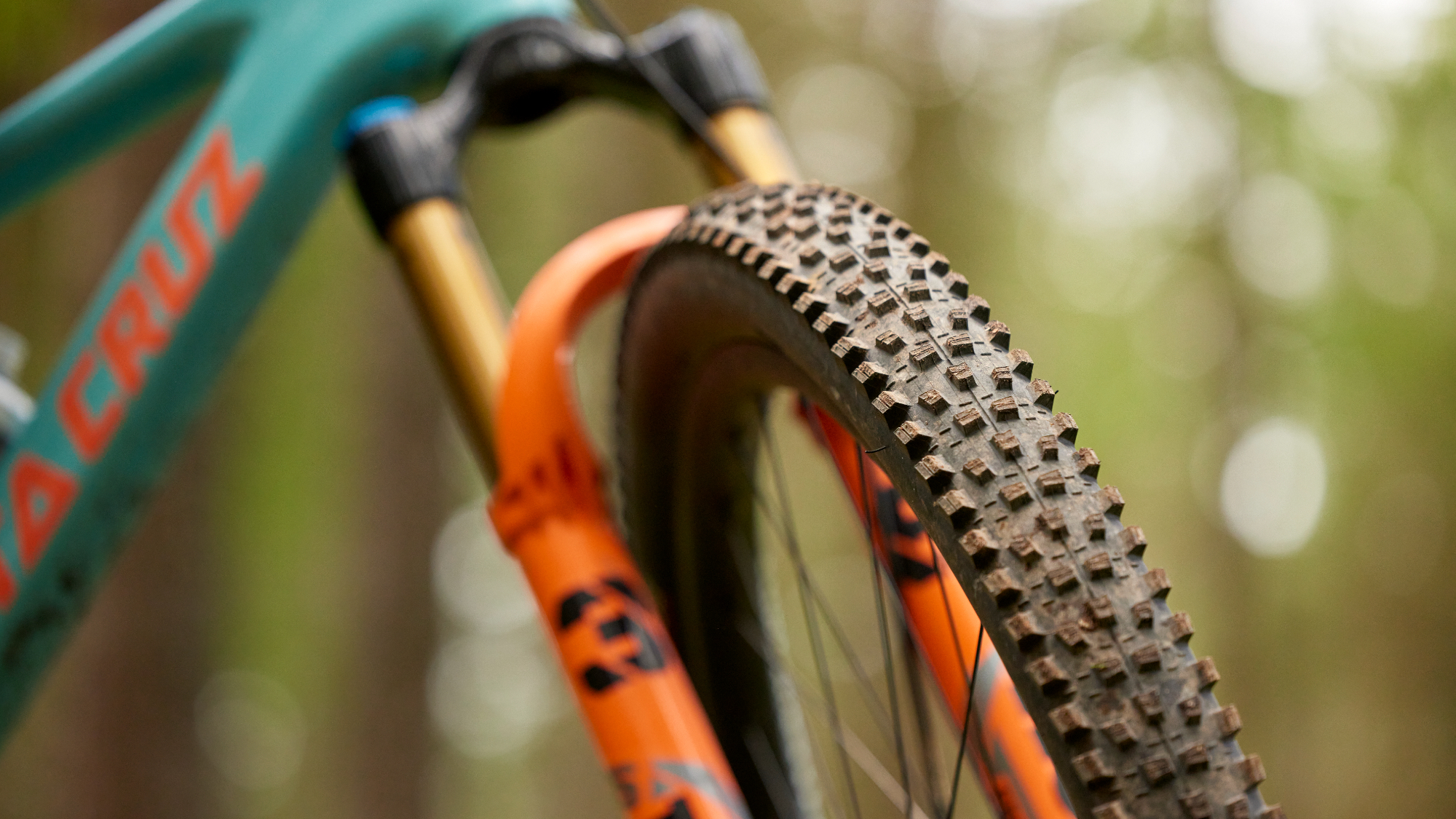Bike Perfect Verdict
The new tread pattern rolls fast and operates fantastically throughout nearly every weather and track condition, making it a winner for aggressive XC slaying and everyday trail riding.
Pros
- +
Deceptively good levels of grip throughout a variety of conditions
- +
Fast-rolling considering the traction
- +
Comfy over chatter
- +
Wide range of uses
Cons
- -
Minimal spec options
- -
Width is narrower than advertised
Why trust BikePerfect
In its original guise, the Maxxis Forekaster was an all-out cross-country tire aimed at riding and racing in wet conditions. It performed well for its intended use, but the narrow profile and widely spaced, shallow tread pattern meant it was potentially sketchy away from a muddy race track.
For information on Bike Perfect's testing procedures and how our scoring system works, see our how we test page.
However, to further expand its extensive tire range, Maxxis has updated the Forekaster giving it a deeper tread pattern and a plumper overall width, which has resulted in the latest version becoming one of the best MTB trail tires currently available for fast-rolling trail riding.

Design and specifications
If you’re familiar with the Maxxis range it’s easy to look at the Forekaster and think you’ve seen its tread pattern before, and that’s because its knob shape and positioning look remarkably similar to the version one tire. But look closer and you’ll notice the size of the knobs has grown substantially to allow for better dirt penetration. Not only have the knobs got bigger, but the side blocks now take a different path, a path that’s now inline and chunky. These changes are said to expand the Forekaster's usability throughout a more diverse range of trail conditions.
Casing options are currently limited to Maxxis’ EXO sidewall only. EXO is a layer of cut and abrasion-resistant material that is added to the sidewall of many Maxxis tires. Whilst it makes sense for a downcountry focussed tire where weight has to be a prioritized factor, it does mean the puncture risk is higher when compared to trail or enduro tires that utilize a thicker sidewall with greater protection, albeit with an increased overall weight. The rubber itself is available in 3C and dual-compound options. The 3C version sees three different levels of rubber hardness throughout the tread – it sees the firmest of the three rubbers across the base of the tire to provide stability, a medium compound rubber in the center knobs to enhance rolling speed, and soft shoulder knobs to enhance grip when cornering. The dual compound option has a more basic construction using only two rubber densities, but it does make it marginally cheaper. On that note, at $93 / £80 Maxxis is now sitting at the premium side of current tire pricing.
Currently, the Forekaster is only available in 29in. I’ve heard nothing about a 27.5in option, but Maxxis states a plumper 2.6in version will be available in the near future. My quoted 2.4in test tire looked great when inflated to 24psi on my 30mm internal width rim, but upon closer inspection, it measured undersized at 2.2in – this isn’t something that’s unusual across the tire market but it’s certainly worth mentioning. As expected with any Maxxis tire, it popped onto my tubeless ready rims with ease, and I experienced no pressure loss or sidewall weeping throughout the testing process.

Performance
Maxxis claims the new Forekaster is designed to offer low rolling resistance with traction in a variety of terrains, and within the first few corners of a dusty alpine flow trail, its claims proved to be legit. Admittedly, from an initial visual inspection, I rode the first portion of the track tentatively, with the thought that I’d gauge grip levels as I went, but straight away it was apparent that the Forekaster’s new tread pattern is rather traction-mighty for its size. The new inline side knobs were hooking up through the dust and providing grip that had me pushing harder and harder the further down the trail I got. The transition from upright to leant right over is smooth, and while the traction limit is never going to be as high as the best mountain bike tires for enduro I never once got caught off guard when cornering with enthusiasm.
The main drawback to how hard you can ride the Forekaster is the EXO construction, and yes, I get it isn’t aimed at rallying rough trails on big travel rigs, but the desire to do so just proves how capable a tire it is. If Maxxis expanded the range to include EXO+ and DoubleDown casing options I can see the Forekaster becoming a stellar fast rolling option for the back of bigger trial and enduro bikes.
Despite the lightweight casing and the tread pattern being shallower than I'm used to, the Forekaster does a brilliant job of isolating high-frequency trail chatter meaning it always felt calm and controlled when riding.
The on-trail pace was noticeably rapid to me too, although, it’s worth noting the rolling speed may be perceived differently depending on what kind of tire you class as ‘normal’ – if you’ve come from a beefier enduro focussed tire like a Maxxis Minion DHF, the increase in pace of the Forekaster is massively noticeable, but if you’re regularly riding on 100 percent XC focussed tires the increase in drag is marginal but apparent. The same goes for the weight too, and the Forekaster's 901g mass sits squarely in-between featherweight XC race and damage shielding enduro units. But with me being more used to more enduro focussed rubber, the reduced weight of the Forekaster was noticeable and made me eager to stamp on the pedals and accelerate over sharp trail crests. I had the 3C version fitted front and back, so it’s likely a dual-compound version on the rear would exaggerate this further.
Due to an unseasonable dry spell, I’ve yet to see how the Forekaster's handle properly soaking trails, but I’ll make sure to report back when I know more.

Verdict
The new Forekaster tire from the main rubber aficionados has proven to be one of the best tires I didn’t even know I needed. With a tread pattern that rolls fast and operates fantastically throughout nearly every weather and track condition, it should appeal to everyone within the aggressive XC slaying and everyday trail riding genres who are looking for an increase in speed, without a substantial sacrifice of traction.
The only thing stopping the Forekaster from scoring the perfect five is that I’d like to see a more supportive sidewall option available to better suit longer travel bikes, and in my eyes, the inflated width is marginally too narrow for modern day standards.
Tech Specs: Maxxis Forekaster tire
- Price: $93 / £80 / €94
- Sizes: 29in only, 2.4 or 2.6in widths
- Options: EXO casing, ‘3C MaxxTerra’ or ‘Dual compound’ compounds
- Weight: 901g (29in x 2.4in)

Jim Bland is a product tester and World Cup downhill mechanic based in North Yorkshire, England, but working Worldwide. Jim’s chosen riding genre is hard to pinpoint and regularly varies from e-bike-assisted shuttle runs one day to cutting downcountry laps the next. Always on the hunt for the perfect setup, Jim will always be found comprehensively testing kit with World Cup racing levels of detail. His ultimate day out includes an alpine loam trail, blazing sunshine, and some fresh kit to test.
Rides: Santa Cruz Hightower, Santa Cruz v10, Specialized Kenevo.
Height: 170cm
Weight: 64kg

